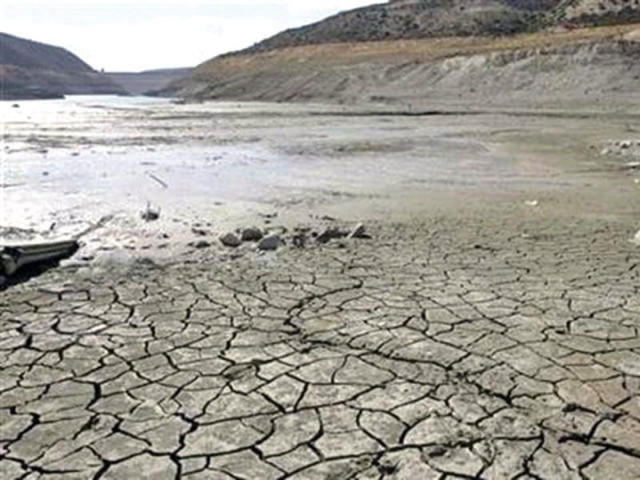Is REDD+ mechanism enough to fight climate change?
Economic forces often overpower need to conserve forests and address other environmental concerns.

GHG emissions from the energy sector in 2015 increased by 117% whereas upsurge in the agricultural sector was as high as 145%. photo: file
REDD+ attempts to create a sphere in which carbon emissions are reduced and folks can more easily adapt to climate change.
Environmentalists have spent decades working to protect tropical forests, both to promote biodiversity and to conserve nature’s bounty. All too often those efforts have fallen short in the face of economic forces that put a higher price on timber and cleared land than on the forests themselves. But that may soon change if international climate negotiators can include forest carbon in a treaty to control global warming.
Pakistan needs access to global funds to cope with climate change
In Pakistan, forest resources are being chipped away, both quantitatively and qualitatively, at a fast pace. The annual deforestation rate was -1.8% from 1990 to 2000, increasing to -2.1% from 2000 to 2005. The current rate of deforestation of natural forests is 27,000 hectares per year. There is a serious threat of accelerated deforestation and forest degradation in many regions due to agricultural expansion, unsustainable logging, extractive industries like mining, and the roads that open forested lands to development.
Forests serve as a market for the earth. In Pakistan, 65% of the population lives in rural areas and depends on wood as a primary source of fuel and construction materials. According to Robledo et al. (2010) high reliance on forests for wood products adds to land degradation, which in turn increases susceptibility to disasters, such as landslides and floods. Recently, there has been a rising realisation of the significance of REDD+ as a means of conserving and enhancing forest cover, forest area, and carbon storage.
Keeping these facts in mind, another important issue is that in Pakistan land use change and forestry contribute only 2% of the total greenhouse gas emissions (GHG). Understandably, the most dominant increase has taken place in energy and agriculture sectors. GHG emissions from the energy sector in 2015 increased by 117% whereas upsurge in the agriculture sector was as high as 145%. Average percentage increase in emissions of other sectors, however, remained less than 85%.
The point is that Pakistan’s share in global GHG emissions is less than 1%. Out of this 1%, only 2% is due to land use change and forestry. If we achieve perfection in preserving forests through REDD+ implementation, how much will it take to fight climate change?
Globally, The Readiness Fund for REDD+ became operational in 2008 and has a capital of just under $370 million. The Carbon Fund became operational globally in 2011 and has a capital of $740 million. Total funds committed to the Forest Carbon Partnership Facility (FCPF) amounted to more than $1.1 billion.
Spending so much money and time, will it work for mankind? Alina Szmant, a professor in marine biology at the University of North Carolina Wilmington said “people need to change their entire lifestyles, be vegetarian, don’t have kids, walk and bicycle more”. She said the loss of vibrant coral around the world is a response to temperature-related stress. The answer to climate change is much bigger than individuals making one or two changes at home.
“People don’t want to listen and people don’t want to hear it because it brings a lot of personal sacrifice to our lifestyle,” she said. “[Due to] the lack of regulations for business, specifically on CO2, we will continue to see the negative effects of a changing climate. As long as the economy is our primary concern, the Earth is going to die,” she added.
Four forestry initiatives Pakistan is taking to fight climate change
Keeping these points in mind, are we waiting for the day when we see less land, less food, less fresh water and increased competition for these resources among a growing population. Implementing the REDD+ mechanism is a great step but it may not be enough. There is an urgent need to decrease carbon emissions from the agriculture and energy sectors.
The government should also divert its attention towards the energy and agriculture sectors to actually bring a significant reduction in carbon emissions. Local governments should impose fines on farmers burning their crop residue. Provincial governments can introduce schemes for provision of happy seeder for cutting crop residue at cheap prices to discourage farmers from burning crop residue. Energy sector should go for alternative energy sources like hydropower, solar and wind energy.
Hydropower is the most suitable for Pakistan since it is much more climate friendly and multi-dimensional in use, being useful for power generation and irrigation.
The writer is a researcher at the Sustainable Development Policy Institute
Published in The Express Tribune, November 20th, 2017.
Like Business on Facebook, follow @TribuneBiz on Twitter to stay informed and join in the conversation.



















COMMENTS
Comments are moderated and generally will be posted if they are on-topic and not abusive.
For more information, please see our Comments FAQ